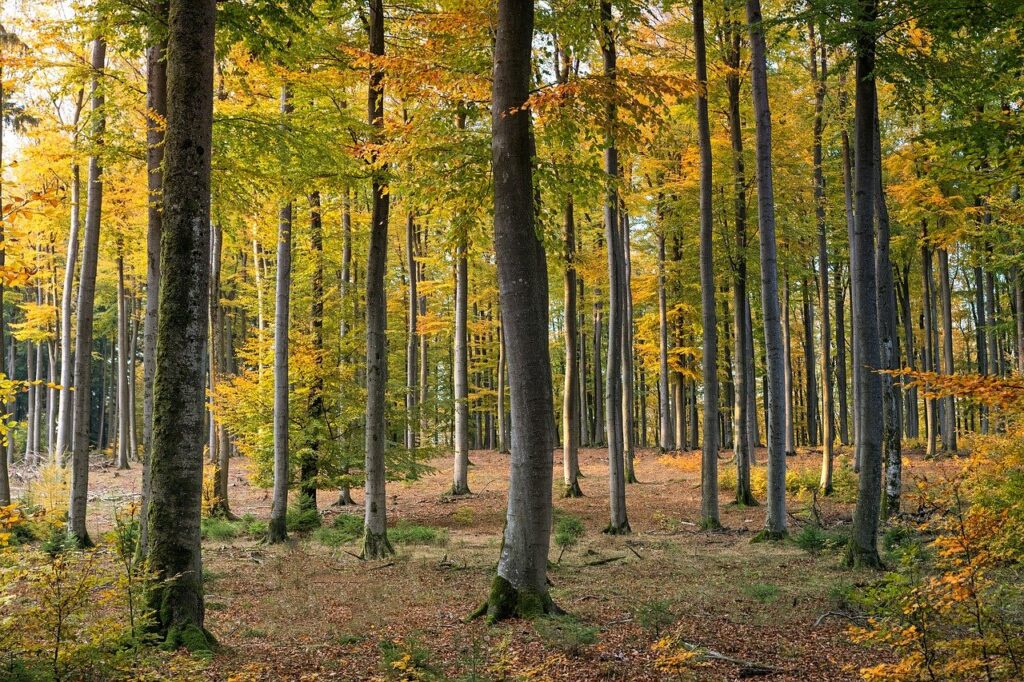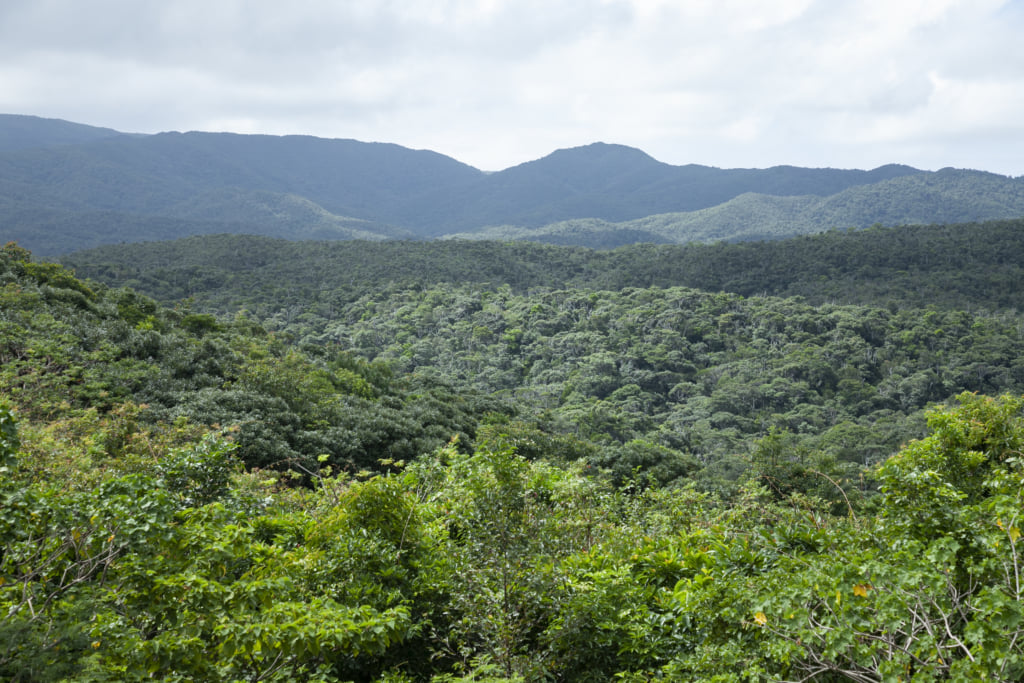Types of Forests
Introduction:
Come and explore to the world of forests, where ecosystems flourish and nature weaves its intricate tapestry of life. Forests, the lungs of our planet, come in a rich array of types, each with its unique characteristics, inhabitants, and ecological significance. In this exploration, we enters into the heart of these sylvan landscapes, from the sun-dappled canopies of tropical rainforests to the resilient boreal realms cloaked in snow.
Types of Forests:
Tropical Rainforest:
The Tropical Rainforest, found near the equator, is a biodiversity hotspot and one of the Earth’s most vital ecosystems. Characterized by high temperatures and abundant, year-round rainfall, these lush forests are home to an extraordinary variety of plant and animal species. The canopy, where sunlight is filtered through layers of foliage, supports a complex network of life. From vibrant butterflies to elusive big cats, the biodiversity of the Tropical Rainforest is unparalleled. Unfortunately, these ecosystems face threats from deforestation, climate change, and habitat degradation, making conservation efforts crucial for preserving their invaluable role in maintaining global ecological balance.

Temperate Deciduous Forest:
Temperate Deciduous Forests are characterized by moderate climates with distinct seasons. Found in regions like eastern North America, Europe, and parts of Asia, these forests undergo seasonal changes, with trees shedding their leaves in the fall and regenerating them in the spring. Common tree species include oak, maple, beech, and hickory. The biodiversity of these forests supports a variety of mammals, birds, and insects. They play a crucial role in the global carbon cycle by storing carbon in their biomass. Human activities, such as logging and urbanization, pose challenges to the sustainability of these ecosystems, emphasizing the importance of conservation efforts to preserve their ecological balance.

Coniferous Forest (Taiga):
The Coniferous Forest, commonly known as the Taiga, blankets vast expanses of the Northern Hemisphere with its unique and resilient ecosystem. Stretching across Siberia, Scandinavia, Canada, and parts of the United States, the Taiga is characterized by its domination of coniferous trees, including spruce, pine, and fir. This biome grapples with long, harsh winters featuring freezing temperatures, snow, and a relatively short growing season. Despite these challenges, the Taiga teems with life, hosting an array of wildlife such as moose, bears, wolves, and migratory birds. The trees of the Taiga, specially adapted to the frigid conditions, showcase a conical shape that helps shed snow and minimize damage from heavy loads. This vast forest plays a critical role in global carbon storage, acting as a significant carbon sink.

Temperate Rainforest:
The temperate rainforest, a captivating ecosystem, is characterized by its moderate temperatures and abundant rainfall, creating a verdant haven for a diverse array of plant and animal life. Found in coastal regions with temperate climates, these rainforests are defined by towering trees, including species like cedar, hemlock, and spruce, that thrive in the consistently moist conditions. Mosses and ferns blanket the forest floor, creating a lush carpet beneath the canopy. The temperate rainforest is not only a scenic wonder but also a vital contributor to global biodiversity, housing numerous species of mammals, birds, and amphibians. This ecosystem’s unique combination of mild temperatures and ample precipitation fosters the growth of some of the world’s most majestic and ancient trees, contributing to the overall health and balance of our planet’s natural environment.

Boreal Forest (Tundra):
The Boreal Forest, also known as the Taiga, encompasses vast expanses of the Earth’s subarctic regions, predominantly in the Northern Hemisphere. This immense biome is characterized by its harsh climate, featuring low temperatures, short growing seasons, and permafrost—a layer of permanently frozen soil. Dominated by coniferous trees such as spruce, fir, and pine, the Boreal Forest stands as a resilient wilderness that has adapted to thrive in extreme conditions. Its landscape is dotted with lakes, rivers, and wetlands, contributing to the rich biodiversity that includes iconic species like moose, wolves, and bears. Despite the challenges posed by the cold, the Boreal Forest plays a crucial role in regulating the planet’s climate by acting as a substantial carbon sink.

Mangrove Forest:
Mangrove forests are unique ecosystems found along coastal areas where saltwater and freshwater meet, creating a habitat characterized by brackish water conditions. These distinctive forests are home to a specialized group of trees and plants that have adapted to thrive in saline environments. Mangroves play a crucial role in coastal protection, acting as a buffer against storm surges and erosion. Their complex root systems not only anchor the trees in the muddy substrate but also provide essential nursery habitats for numerous marine species. The intertwining roots create a maze that serves as a refuge for small fish and invertebrates, offering protection from larger predators. Unfortunately, these ecosystems face threats from human activities such as deforestation and aquaculture, emphasizing the need for conservation efforts to ensure the survival of these invaluable coastal ecosystems.

Montane Forest:
Montane forests, nestled in the embrace of mountainous landscapes, represent a unique ecological niche distinguished by their elevation. Found at varying altitudes, these forests undergo distinct changes as one ascends or descends the slopes. Typically characterized by cooler temperatures and often shrouded in mist, montane forests exhibit a layered structure dictated by the altitudinal gradient. Montane forests play a crucial role in regulating water flow, serving as natural water reservoirs and supporting diverse ecosystems. The unique environmental conditions, coupled with the breathtaking landscapes, make montane forests not only vital components of regional biodiversity but also destinations that captivate with their beauty and ecological significance.

Dry or Desert Forest:
The Dry or Desert Forest, a paradox within arid landscapes, thrives in conditions where water is scarce. In these challenging environments, resilient flora and fauna have adapted to survive with limited moisture. Desert forests are often characterized by drought-tolerant trees and shrubs, such as acacias and mesquites, which have evolved specialized mechanisms to conserve water. These hardy ecosystems play a crucial role in stabilizing sand dunes, preventing desertification, and providing habitats for unique species that have mastered the art of thriving in extreme conditions. Despite the harshness of their surroundings, desert forests exhibit a surprising diversity of life and showcase the tenacity of nature in the face of adversity.

Temperate Coniferous Forest:
The Temperate Coniferous Forest is a biome characterized by its moderate temperatures and a prevalence of coniferous trees. Found in regions with cooler climates, these forests often grace areas with distinct seasons. Conifers like spruce, fir, and pine dominate the landscape, creating a lush green environment even in the colder months. The trees are adapted to conserve water and withstand the challenges of winter. This biome is renowned for its timber resources, with coniferous trees providing valuable wood for various purposes. The forest floor is typically covered with a carpet of needles, and the ecosystem supports a variety of wildlife, including mammals, birds, and insects. The Temperate Coniferous Forests play a vital role in carbon storage and contribute significantly to the global climate regulation.

Mixed Forest:
A Mixed Forest, as the name suggests, is a biome characterized by the coexistence of both deciduous and coniferous tree species. This type of forest presents a harmonious blend of foliage, with broad-leaved trees like oaks, maples, and beeches standing alongside evergreen conifers such as pines and spruces. This combination results in a visually diverse and ecologically rich environment. Mixed forests are often found in regions with moderate climates, where both types of trees can thrive. The varying leaf structures and adaptation strategies of deciduous and coniferous trees contribute to the resilience and biodiversity of the ecosystem. These forests play a crucial role in supporting a wide array of plant and animal species, offering habitats that cater to the needs of both cold and warm seasons.

Seasonal Forest:
Seasonal forests are characterized by distinct wet and dry seasons, and their ecosystems undergo significant transformations in response to these alternating climatic conditions. Found in regions with pronounced seasonal changes, these forests experience periods of abundant rainfall followed by drier intervals. The flora and fauna in seasonal forests have evolved to adapt to these fluctuations, with some species flowering and thriving during the wet season and others entering periods of dormancy or employing water-conserving strategies during the dry season. This cyclic pattern influences the behavior of both plant and animal life, creating a dynamic and ever-changing environment. Seasonal forests play a crucial role in maintaining biodiversity, as different species have evolved to exploit the opportunities presented by the alternating conditions.

Subtropical Forest:
Subtropical forests, characterized by their location in regions with warm temperatures, offer a unique blend of biodiversity and climatic conditions. Found between the tropical and temperate zones, these forests typically experience milder winters than their temperate counterparts. The vegetation in subtropical forests is diverse, featuring a mix of evergreen and deciduous trees adapted to the relatively warm climate. Notable species may include broad-leaved evergreens, such as magnolias and live oaks. The understory is often rich in plant life, showcasing ferns, palms, and various flowering plants. Subtropical forests play a crucial role in maintaining ecological balance, providing habitat for diverse animal species, including birds, mammals, and insects.

Tropical Dry Forest:
Tropical Dry Forests are ecosystems characterized by distinct wet and dry seasons, experiencing a pronounced dry period that distinguishes them from tropical rainforests. Found in regions with seasonal climates, these forests endure a prolonged period of reduced rainfall, leading to deciduous trees shedding their leaves as a water-conserving strategy. Despite the challenging conditions, Tropical Dry Forests are biologically rich and host a variety of flora and fauna adapted to the cyclical nature of their environment. Trees such as acacias and deciduous hardwoods dominate the landscape, providing habitat for diverse animal species, including reptiles, birds, and mammals.

Secondary forest :
A secondary forest refers to an area of vegetation that has regrown naturally after a significant disturbance, such as logging, agriculture, or fire, has altered the original forest structure. Unlike primary forests, which have not been significantly impacted by human activities, secondary forests arise through ecological succession. Over time, these recovering ecosystems develop a diverse array of plant and animal species, often different from the original composition. While secondary forests may not replicate the complexity of mature, primary forests, they play crucial roles in biodiversity conservation, carbon sequestration, and ecosystem restoration.
